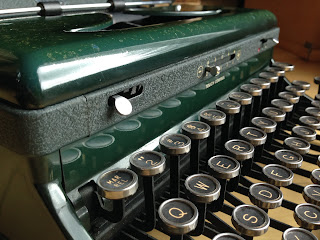1959 Royal FP

All of the photos this time around are terrible The Royal FP was introduced in 1957, and was the direct successor to the Royal HH. The FP was the sixth standard desktop after the Royal 10 debuted in the early 1910s. All these machines, the 10, KHM, KMM, KMG, HH, and the FP share the same basic internal mechanical design with variations here and there. As far as operation and speed, they are all mostly the same, and all very very exceptional. The FP was introduced in six lovely colors, in Pica (FPP), Elite (FPE) and other variations such as cursive (FPS). The model above is the Pearl Gray, with a Pica (10cpi) standard typeface. I got this machine essentially for free at a local antiques dealer, It was being sold from a bank in Lisle, the headquarter town of the Ames Supply Co, known among the typewriter folks for their parts and tool manuals. It was working well, with minimal issues, so I took to home with me to clean it up. Dismantling ...


